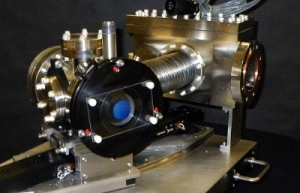Dec 9 2015
McPherson's grazing incidence wavelength dispersive optical spectrometer allows rapid analysis of spectral light in the ~1 to 300nm wavelength region (4 to 1200 eV.) Beside high-harmonic laser generation experiments, the Model 248/310 is also useful for measuring ion- or discharge light sources and astrophysics detector calibration. At FLASH, the Free Electron Laser experiment at DESY Germany, the McPherson 248/310 UHV model assisted in analysis of the 2.3 to 4.4-nanometer water window (a region transparent to light).

At the Laboratory of Radiation Physics, Belgorod State University in Russia, a Model 248/310 spectrometer investigates the interaction of X-rays and fast electrons with condensed media and measures the Cherenkov Effect. McPherson instruments are essential in many and related research endeavors. Experimental fusion reactors around the world employ McPherson XUV spectrometers too!
Space scientists and plasma physicists who need an instrument for vacuum ultraviolet, EUV, and XUV capitalize on the McPherson 248/310 spectrometers range and flexibility. Configured in reverse, it operates as a tunable light source. This is useful for spectral calibration and spectroscopy in the vacuum ultraviolet and the extreme and soft x-ray wavelength region (EUV and SXR respectively). Direct detection CCDs, image intensifiers, microchannel plates, or electron multipliers provide wide range and flexible detection.
The Model 248/310 ships completely assembled and tested for spectral-resolution and with vacuum leak test certification. Adapters, differential pumping, and grazing incidence collection optics to more easily connect to the experiment can be included too. Every shipment is complete with a wavelength calibration certification. McPherson grazing incidence optical spectrometers uses angles between 84 and 88.5 degrees for preferentially good XUV throughput to energies around 1200eV (~1nm). The Rowland-circle design has excellent wavelength reproducibility. High vacuum ready, the McPherson Model 248/310 spectrometer can also be prepared for ultra-high vacuum (UHV). UHV models feature all metal seals and can optionally be RGA certified prior to shipment.